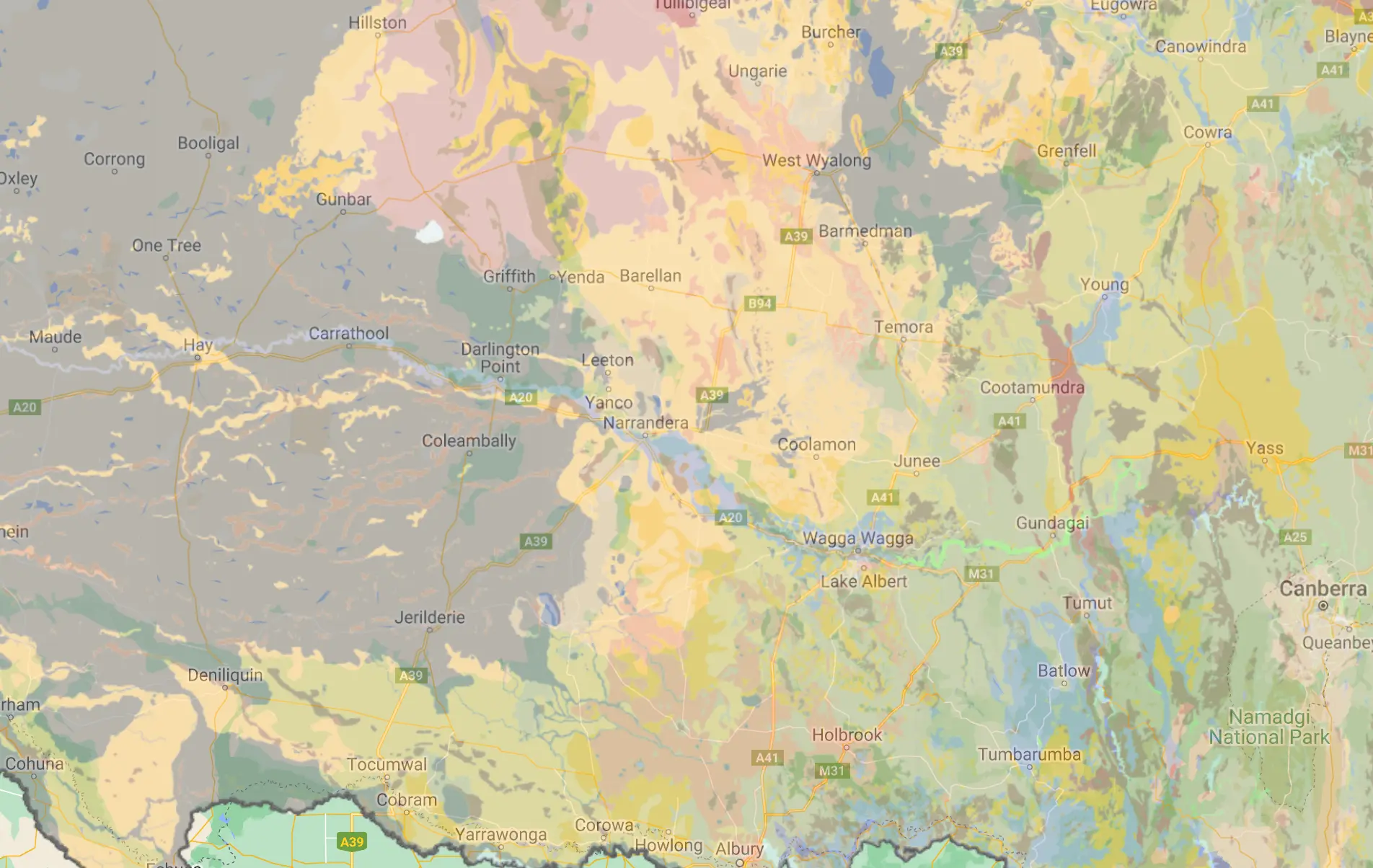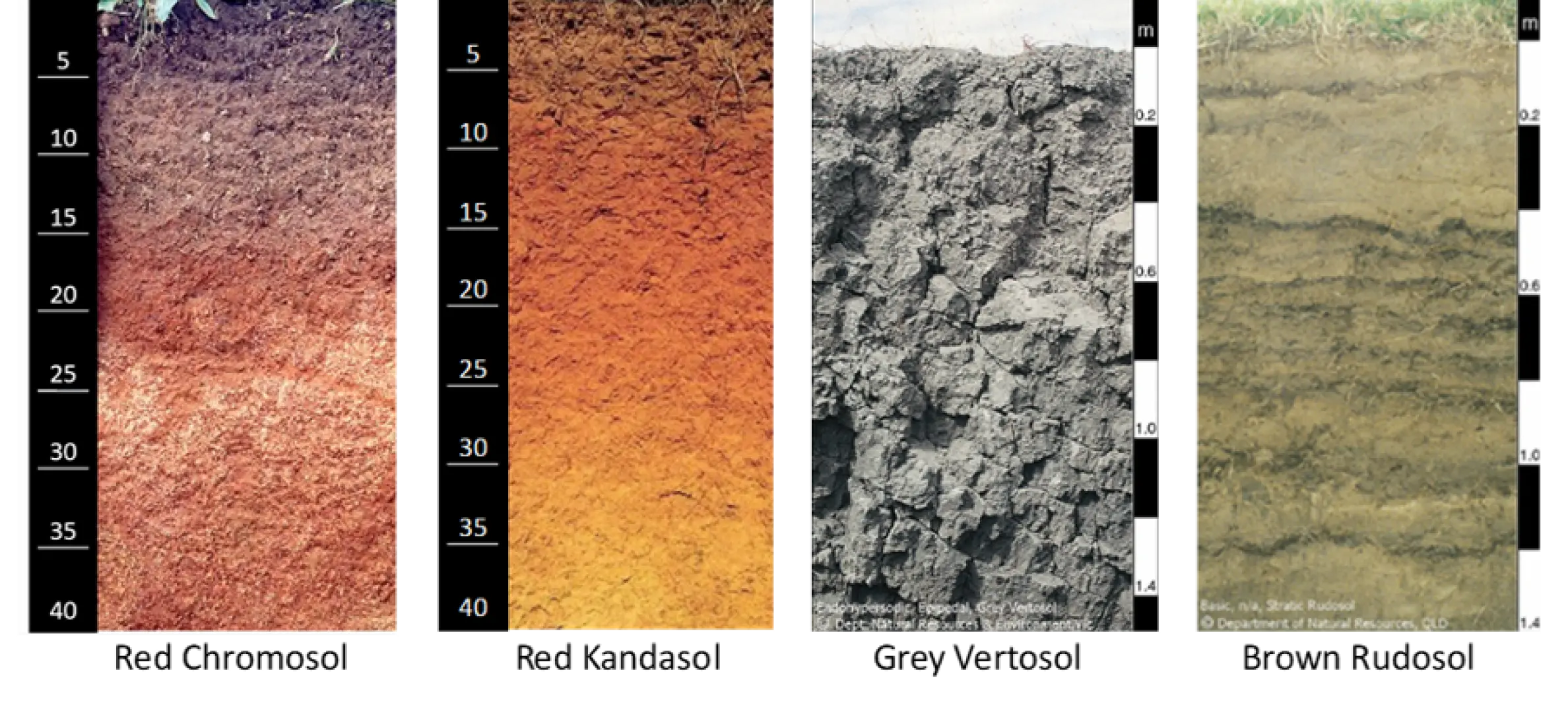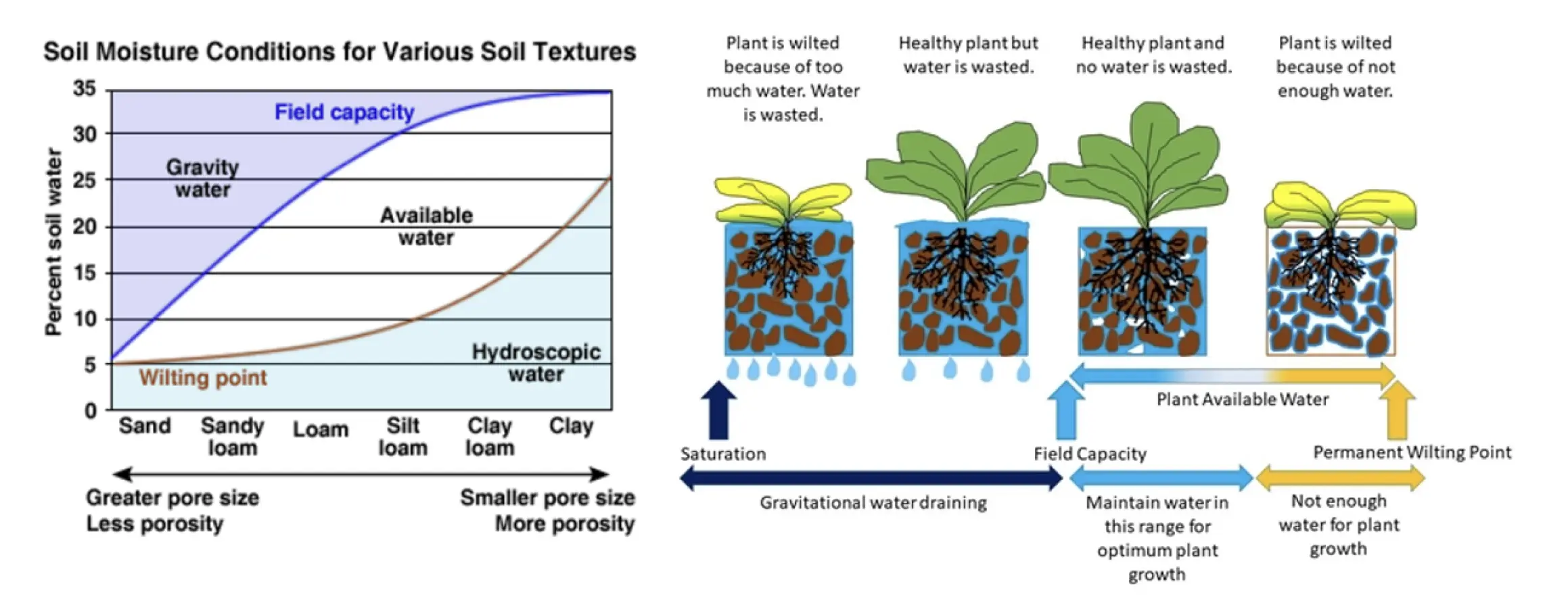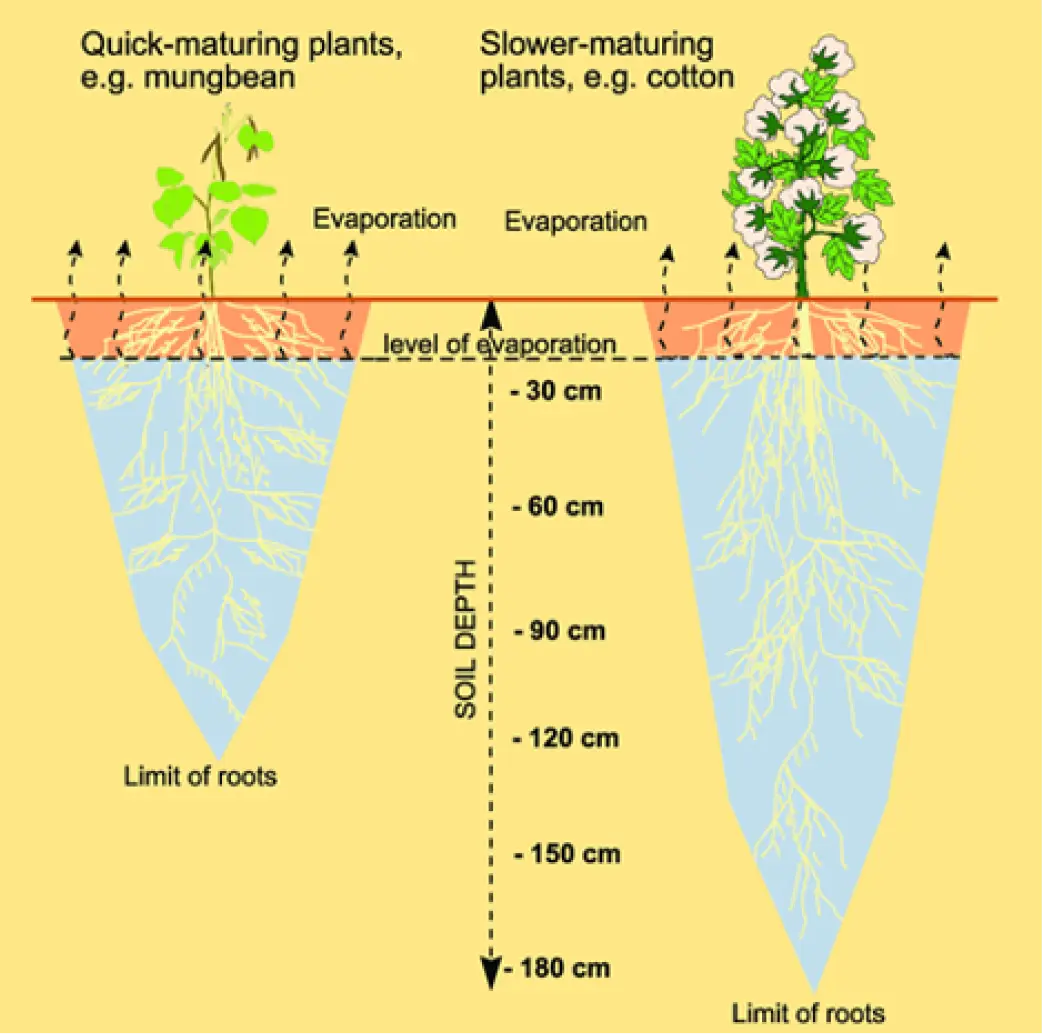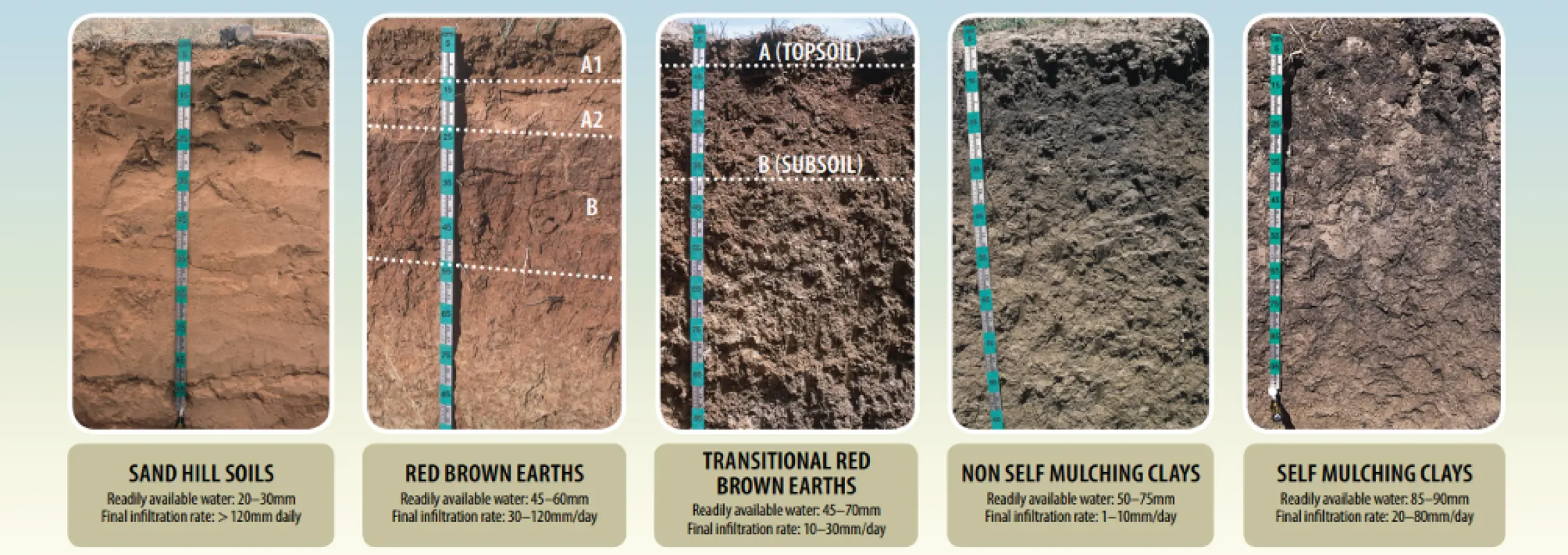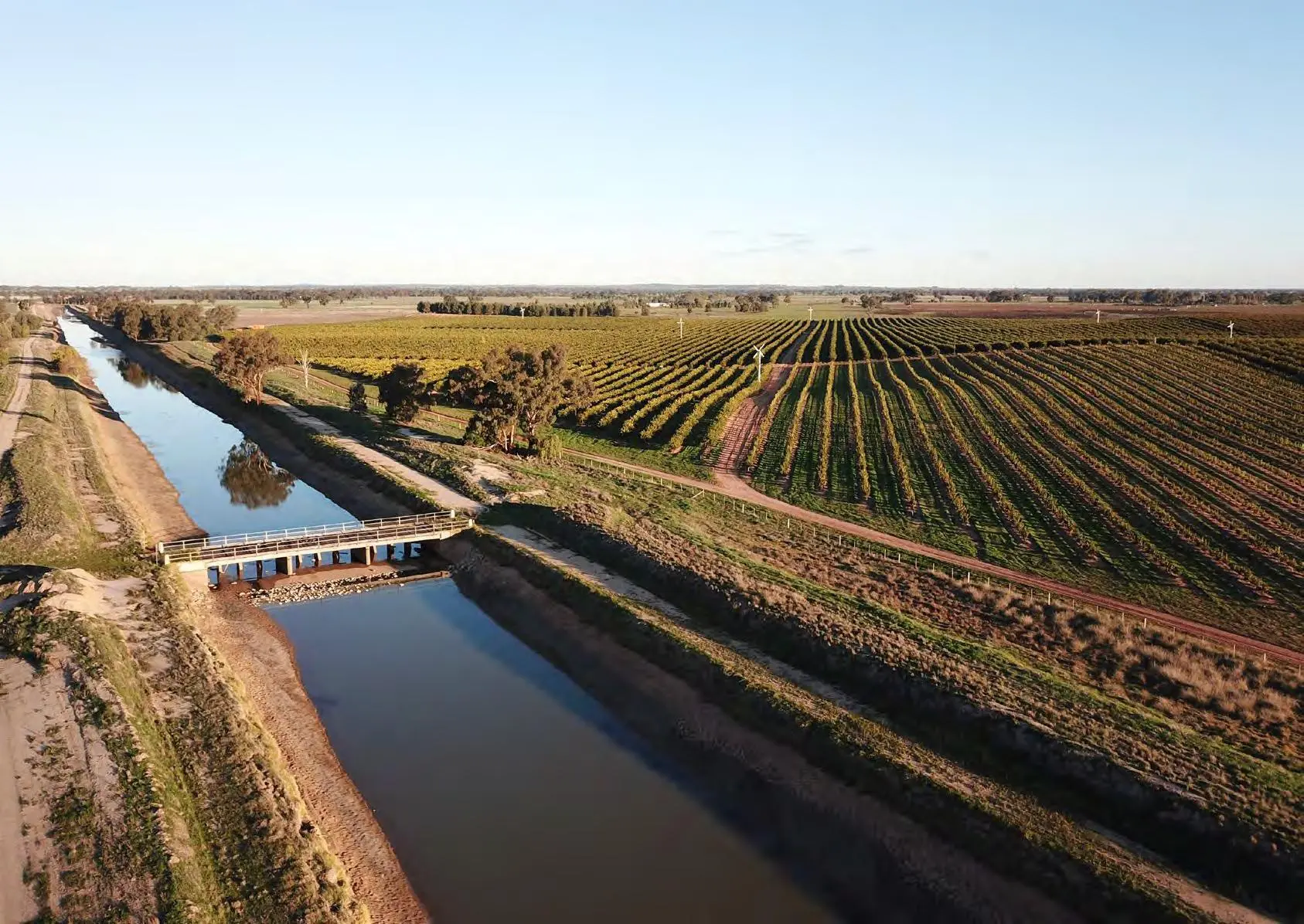Water management
Managing surface water flows and minimising potential for localised ponding can help reduce the impacts of sodic soils.
Soil amendments
Applying soil amendments like gypsum, organic matter, or polyacrylamides can modify the Exchangeable Sodium Percentage (ESP) or directly influence aggregate stability. Gypsum is particularly effective as it provides calcium, which can replace sodium on the clay particles, improving soil structure.
Increase organic matter
Increasing the organic matter content of the soil can improve its structure and water-holding capacity.
Deep ripping
Deep ripping in conjunction with slotting or trenching with added gypsum can help break up compacted layers and improve water infiltration.
Avoid disturbance
Avoiding disturbance of already productive sodic soils can prevent exacerbating sodicity issues.
Destocking
Destocking paddocks when the soil is wet can prevent damage to surface soil structure and increase surface sealing caused by livestock.
Design and operational issues
The design and operation of irrigation systems can also present challenges. For example, an overhead irrigation system’s maximum water delivery rate is effectively set and is only able to irrigate adequately a specific area. A common reason for growers complaining about their irrigation system performance is that they have overcommitted or attempted to irrigate too large an area.
Diseases
Moist or damp soil conditions can favour the development of soil-borne diseases such as Pythium, and Phytophthora spp.
